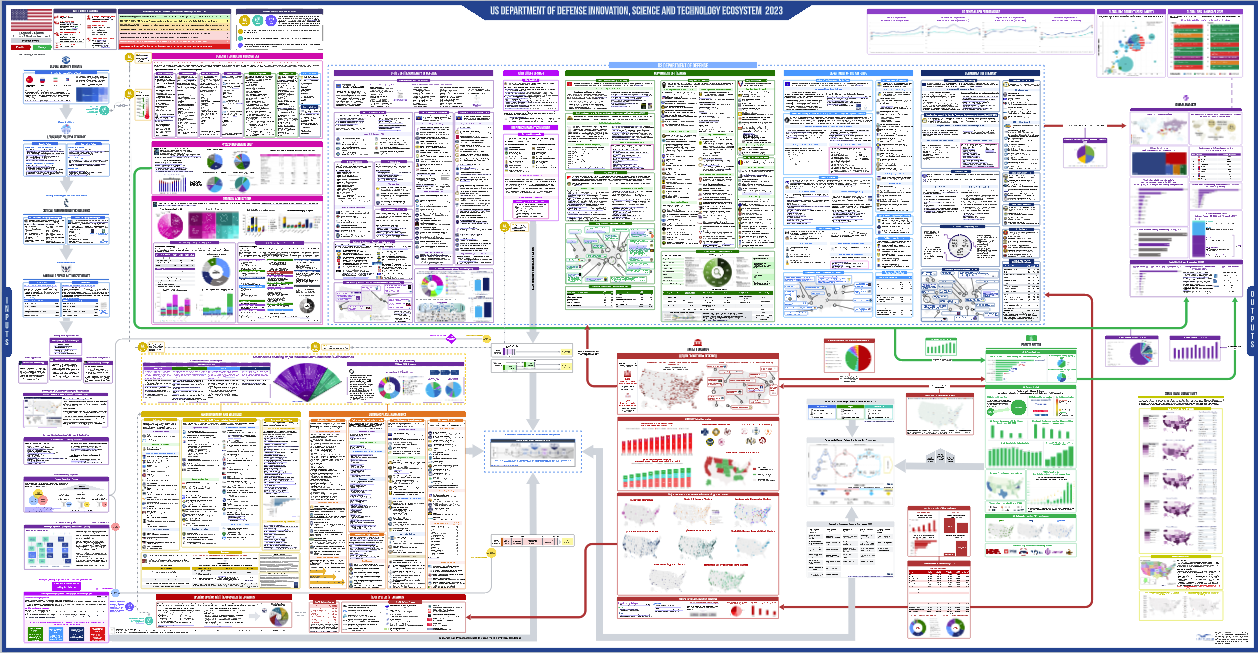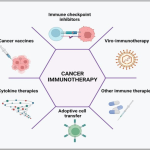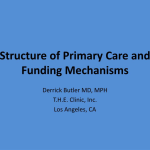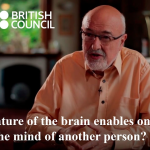The U.S. innovation ecosystem stands as a global leader, renowned for its dynamic synergy between academia, industry, and government that has continually driven advancements in technology and healthcare. Originating during World War II, this collaborative framework was forged out of necessity, leading to groundbreaking achievements such as the mass production of penicillin, a pivotal development in biomedical innovation. Today, this public-private partnership remains vital, with substantial federal funding bolstering research and development initiatives across diverse fields. The impact of this collaboration not only enhances national security and public health but also fosters economic growth by catalyzing new discoveries and innovations. As the U.S. innovation ecosystem evolves, its role in shaping the future of science and technology becomes ever more crucial, making it an area of keen interest for policymakers and researchers alike.
The American innovation framework, often highlighted for its effectiveness in driving progress, encompasses a cooperative dynamic that includes universities, private industries, and government entities. This interconnected network has been instrumental in the evolution of various sectors, notably in the life sciences where breakthroughs like antibiotic production came to fruition. By leveraging public resources and fostering academia-industry collaboration, the system promotes robust research endeavors that contribute to significant developments in health and technology. As this ecosystem continues to expand, it provides an invaluable model for innovation, underscoring the importance of strategic partnerships and the sustained investment in research and development. This collaborative ethos has not only produced remarkable achievements in biomedicine but also serves as a blueprint for future advancements across multiple domains.
The Early Foundations of the U.S. Innovation Ecosystem
The U.S. innovation ecosystem has its roots deeply embedded in the significant scientific efforts that emerged during World War II. This historical period catalyzed a groundbreaking partnership between the federal government and academic institutions, paving the way for unprecedented advancements in fields like biomedical innovation. Before the war, many universities lacked substantial funding and focus on research; however, the urgent demands of the military spurred a rapid acceleration toward scientific development. The creation of agencies such as the Office of Scientific Research and Development (OSRD) facilitated coordination of wartime research, leading to monumental breakthroughs like the mass production of penicillin, which changed the landscape of healthcare.
The OSRD’s initiatives fostered an environment where public-private partnerships flourished, setting a precedent for collaboration that continues to drive U.S. innovation today. This alliance between private research firms, universities, and federal agencies enabled a remarkable synergy, leading to explosive growth in research and development. The OSRD established practices for funding, patent policies, and even indirect cost funding, which encouraged academic institutions to engage in research. Consequently, the framework established during the war resonated through the subsequent decades, shaping the current landscape of biomedical innovation and enhancing the U.S.’s role as a leader in global technology.
The Role of Federal Funding in Biomedical Research
Federal funding has been a cornerstone of the U.S. innovation ecosystem, particularly in the realm of biomedical research. Government support has historically enabled academic institutions to harness their capabilities for scientific advancement, allowing breakthroughs that might not have been possible through private funding alone. Initiatives from bodies like the National Institutes of Health (NIH) have provided essential financial backing for research projects, directly contributing to the development of life-saving drugs and therapies. The investment in research and development (R&D) fosters an environment where academics can explore innovative solutions to pressing health issues, creating a ripple effect of advancements across the healthcare system.
However, the conversation around federal funding is increasingly contentious, particularly in light of recent proposals from the government that aim to cap reimbursements for indirect research costs. Such changes could lead to significant reductions in funding, ultimately stifling the progress of biomedical research which heavily relies on a well-structured funding mechanism. Maintaining strong federal support is crucial, as the historical relationship between public funding and private enterprise has birthed numerous transformative therapies and medical technologies, thereby ensuring that the U.S. remains at the forefront of global innovation.
Public-Private Partnerships: The Key to Sustainable Innovation
The integration of public-private partnerships is vital to the sustainability of the U.S. innovation ecosystem. These partnerships have enabled a collaborative approach to problem-solving in essential sectors, with significant advancements evident in biomedical research. During World War II, these collaborations were instrumental in stimulating rapid scientific developments, including the successful production of penicillin. The framework established during this critical time has become a model for future endeavors, illustrating how government collaboration with private firms and academic institutions can lead to groundbreaking innovations that deeply impact society.
Today, public-private partnerships continue to thrive, supporting a diverse range of sectors beyond biomedical innovation, including technology and engineering. The adaptive nature of these collaborations ensures that both academic institutions and private enterprises can share resources, knowledge, and risk, leading to enhanced innovation and more robust outcomes. The commitment to nurturing these partnerships can foster long-term growth, ensuring that the U.S. innovation ecosystem remains vibrant and competitive on a global scale.
Historical Context: The Birth of Modern Biomedical Innovation
The historical context of U.S. biomedical innovation is pivotal to understanding its current success. The evolution of this sector can be traced back to the urgent needs posed by World War II, where scientific communities were mobilized to develop crucial medical interventions like penicillin. This focus on combating diseases that affected soldiers created an unprecedented impetus for innovation, resulting in collaborations that have been pivotal in both military and civilian healthcare advancements. The necessity for quick and effective solutions to public health crises led to the establishment of infrastructures that support biomedical research, ensuring that knowledge gained during wartime had lasting implications.
In the years following the war, the relationships fostered between government agencies, academic institutions, and private pharmaceutical companies grew stronger, providing a foundation for continued growth in biomedical innovation. The knowledge amassed not only yielded significant medical breakthroughs but also nurtured a vibrant ecosystem that encouraged further research. This legacy has crafted a landscape where federal funding continues to empower institutions to explore new frontiers in medicine, embodying a partnership that drives forward both health and technological advancement.
The Impact of Penicillin Production on Global Health
The mass production of penicillin during World War II marked a turning point not just for the United States but for global health standards. Initially developed through the collaboration of scientists funded by the OSRD, penicillin’s successful production revolutionized the way infections were treated. As one of the first antibiotics to be used widely, it significantly decreased morbidity and mortality from bacterial infections among soldiers, which had previously been a leading cause of death. This intervention not only improved military health outcomes but also laid the groundwork for antibiotic treatment in civilian populations, profoundly transforming medical practices worldwide.
By demonstrating the efficacy of government-supported research and development, the success of penicillin prompted an era of renewed interest in biomedical innovation. The methods developed for penicillin production paved the way for a surge in pharmaceutical discoveries in the following decades, leading to the development of various other antibiotics and medications. The legacy of penicillin production continues to influence current healthcare systems and practices, highlighting the importance of leveraging public investment to foster innovative solutions that address pressing health issues.
Lessons Learned from WWII for Today’s Innovation Challenges
Reflecting on the innovation challenges of today, many lessons can be drawn from the experiences of World War II. The urgency to address immediate health threats during the war brought about an unprecedented level of collaboration between researchers, industrial partners, and government agencies. This historical context serves as a reminder that effective problem-solving often requires a multi-faceted approach that incorporates diverse expertise. In today’s climate of rapid technological advancement and complex health challenges, replicating this collaborative spirit could help address contemporary issues such as pandemic preparedness and emerging infectious diseases.
Moreover, understanding the need for structured funding mechanisms, akin to those established during the war, remains vital for the ongoing success of biomedical research. The partnerships that emerged from these historical experiences highlight the importance of sustained public investment in innovation. As current debates continue around federal funding and the implications of potential cuts, it is essential to advocate for robust support systems that can fuel collaborative efforts in tackling health crises, akin to those witnessed during WWII.
The Evolution of Research Funding Policies
Over the years, research funding policies have undergone significant transformations, adapting to the changing landscape of biomedical innovation. Initially established to meet the urgent needs during World War II, funding structures have evolved to enhance incentive mechanisms for collaboration. As firms and academic institutions increasingly participate in public-private partnerships, these funding policies must adapt accordingly. Contemporary discussions around research funding, including reimbursement for indirect costs, have reignited discussions about the principles established by OSRD and their applicability in today’s funding climate.
Moreover, the evolution of federal funding policies must address the need for balance between incentivization and accountability. The historical context of the war highlighted the necessity for indirect cost reimbursements to encourage participation in R&D projects. The importance of ensuring that researchers can sustain their operations while pursuing innovative projects cannot be overstated. As the landscape of biomedical innovation continues to evolve, policymakers must craft funding policies that not only stimulate research but also strengthen the overall support system for the U.S. innovation ecosystem.
Protecting the Legacy of U.S. Innovation
As the U.S. faces new challenges within its innovation ecosystem, safeguarding the legacy and success of its biomedical sector has become increasingly crucial. With the rise of proposals aimed at reducing federal funding, it is imperative that stakeholders advocate for policies that preserve the collaborative framework that has proven beneficial over the past eight decades. The strength of the U.S. innovation system, particularly in biomedicine, is not solely a result of financial investment, but also of the holistic partnerships fostered between academia, industry, and government.
Efforts to maintain and enhance the U.S. innovation ecosystem must prioritize the continued investment in research and development, safeguarding funding streams that enable academic institutions and private enterprises to thrive. The paramount goal should be to protect successful collaborative models that have historically driven the biomedical innovation sector forward. Fostering an environment that encourages innovation can ensure that the U.S. remains a global leader, not only in technological advancements but also in health and societal well-being.
Future Prospects for the U.S. Innovation Ecosystem
Looking ahead, the prospects for the U.S. innovation ecosystem are promising, yet they require careful navigation to sustain the progress achieved thus far. Emphasizing the importance of interdisciplinary collaboration will be crucial as we tackle new challenges in healthcare and technology. Future innovations will likely emerge at the intersection of various fields, necessitating partnerships that harness expertise from multiple sectors. Programs aimed at fostering these synergies, akin to the historical collaborations witnessed during WWII, will be essential for continued success.
Additionally, addressing disparities in funding distribution will play a key role in forging an inclusive innovation ecosystem. Ensuring that diverse voices and ideas are represented in biomedical research will enhance creativity and improve outcomes. By fostering an environment that supports a broad range of contributors, the U.S. can harness its vast potential for innovation. The goal should be to CELEBRATE and enhance the inherent strengths of the U.S. innovation ecosystem, ensuring its resilience and adaptability in the face of future global challenges.
Frequently Asked Questions
How did the U.S. innovation ecosystem contribute to biomedical innovation during World War II?
The U.S. innovation ecosystem played a crucial role in biomedical innovation during World War II by facilitating public-private partnerships that enabled rapid research and development. For instance, the mass production of penicillin, which was initially difficult, was achieved through coordinated efforts between the federal government, academic institutions, and industrial laboratories. This collaboration led to advancements in drug development and ultimately transformed military and civilian healthcare.
What is the significance of federal funding in the U.S. innovation ecosystem?
Federal funding is a cornerstone of the U.S. innovation ecosystem, particularly in the biomedical sector. It supports academic research that fuels private sector development, thereby accelerating technological advancements. As seen during the war, significant investments led to breakthroughs in medical treatments and technologies, exemplifying how government funding can drive impactful innovation in biomedicine.
What are public-private partnerships in the context of the U.S. innovation ecosystem?
Public-private partnerships in the U.S. innovation ecosystem refer to collaborations between government agencies and private entities to foster research and development initiatives. This collaboration has been pivotal in advancing biomedical innovation, as it brings together resources, expertise, and funding to tackle urgent health challenges, a practice that began during World War II and continues today.
How did the U.S. innovation ecosystem lead to the success of penicillin production?
The U.S. innovation ecosystem’s response to urgent wartime needs led to the successful production of penicillin. By fostering collaborations among federal agencies, universities, and industry, key research advancements were made, particularly in large-scale fermentation processes for penicillin production. This collaborative framework proved not only crucial for military health but also set the stage for widespread civilian antibiotic use.
What challenges does the U.S. innovation ecosystem face in biomedical research funding?
The U.S. innovation ecosystem faces challenges regarding federal funding, especially proposals to cap reimbursements for indirect research costs. These funding cuts could significantly impact the biomedical research landscape, potentially limiting the public-private partnerships that have historically driven innovation. Maintaining adequate funding is vital to sustaining the ecosystem’s success in advancing medical research and technology.
What has been the impact of federal R&D investments on the U.S. innovation ecosystem?
Federal R&D investments have profoundly shaped the U.S. innovation ecosystem by establishing a strong foundation for academic and private sector collaboration. These investments have catalyzed advancements in biomedical research, resulting in significant health improvements and fostering the growth of pharmaceutical companies that dominate modern drug development.
In what ways did the U.S. innovation ecosystem evolve after World War II?
After World War II, the U.S. innovation ecosystem evolved to become more integrated and research-driven, particularly in biomedicine. Continued collaborations among universities, the pharmaceutical industry, and federal funding agencies like the NIH led to enhanced drug discovery processes and technological advances that shaped the modern biomedical landscape.
How does the U.S. innovation ecosystem maintain its leadership in biomedical innovation today?
The U.S. innovation ecosystem maintains its leadership in biomedical innovation by leveraging a combination of robust federal funding, strong academic research institutions, and dynamic private sector collaboration. This synergy fosters an environment conducive to groundbreaking research and development, which continues to be emulated worldwide as a model for innovation.
| Key Point | Details |
|---|---|
| Origins of U.S. Innovation Ecosystem | The partnership between federal government and academia began during World War II, initially proposed to enhance military technology. |
| Key Achievements during WWII | Mass production of penicillin marked a significant success, drastically improving military and civilian health outcomes. |
| Role of OSRD | The Office of Scientific Research and Development coordinated wartime research and established funding and patent policies. |
| Impact on Biomedical Science | Postwar efforts built on wartime success, leading to a golden age of drug development and scientific training. |
| Future Concerns | Debate continues over federal funding levels and policies, particularly regarding indirect research funding amidst proposed cuts. |
Summary
The U.S. innovation ecosystem has been a hallmark of global leadership in technology and biomedical research. Rooted in a robust partnership between the federal government and academia since World War II, it has produced significant advancements such as the mass production of penicillin and other groundbreaking medical innovations. This collaboration not only resolved immediate wartime challenges but also fostered a legacy of innovation that continues to thrive today. As this ecosystem faces scrutiny over funding and policy changes, preserving its foundational structures is paramount to sustaining its remarkable contributions to health and economic growth.










